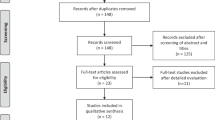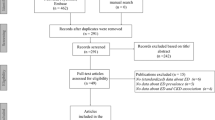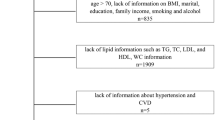Abstract
The most important cause of erectile dysfunction (ED) among aging men is organic disease due to vascular disturbance that is often caused by atherosclerosis. Recently, studies have shown that atherosclerosis can manifest as an active inflammatory process rather than as passive vascular injury caused by lipid infiltration. Our study aimed to examine the association of ED with the neutrophil/lymphocyte ratio (NLR) and the platelet/lymphocyte ratio (PLR), both of which are markers of inflammation. Between December 2014 and May 2015, 101 male patients aged 40–70 years who were seen at our institute due to ED were included in this study. Thirty-one sexually active men with similar clinical and demographic characteristics without ED were included in our study as a control group. The control and patient groups were compared with respect to their NLR and PLR values as well as other hormonal, biochemical, hematological parameters. The median ages of the patient and control groups were 49 (40–69) and 48 (43–65) years old, respectively. Comorbidities such as hypertension, diabetes, chronic obstructive pulmonary disease (COPD), and coronary artery disease were not significantly different between the groups (p > 0.05). The neutrophil-to-lymphocyte and platelet-to-lymphocyte ratios were significantly higher in the patient group than in the control group (p < 0.05). Furthermore, the detected CRP levels were also significantly higher in the patient group than in the control group (p < 0.001). In the correlation analysis, the NLR, PLR, and CRP levels were negatively correlated with the IIEF-5 scores. A multivariate analysis was performed to determine the independent predictors of ED. PLR was identified as an independent predictor for ED. The neutrophil-to-lymphocyte and especially platelet-to-lymphocyte ratios are correlated with a diagnosis of ED, and these ratios could serve as practical parameters that will not elicit additional costs.
This is a preview of subscription content, access via your institution
Access options
Subscribe to this journal
Receive 8 print issues and online access
$259.00 per year
only $32.38 per issue
Buy this article
- Purchase on Springer Link
- Instant access to full article PDF
Prices may be subject to local taxes which are calculated during checkout
Similar content being viewed by others
References
Chew KK, Bremner A, Stuckey B, Earle C, Jamrozik K. Is the relationship between cigarette smoking and male erectile dysfunction independent of cardiovascular disease? Findings from a population-based cross-sectional study. J Sex Med. 2009;6:222–31.
McCabe MP, Sharlip ID, Lewis R, Atalla E, Balon R, Fisher AD, et al. Risk factors for sexual dysfunction among women and men: a consensus statement from the fourth international consultation on sexual medicine 2015. J Sex Med. 2016;13:153–67
Corona G, Vignozzi L, Rastrelli G, Lotti F, Cipriani S, Maggi M, Benign prostatic hyperplasia: a new metabolic disease of the aging male and its correlation with sexual dysfunctions. Int J Endocrinol. 2014;2014:329456
Corona G, Rastrelli G, Maseroli E, Forti G, Maggi M, Sexual function of the ageing male. Best Pract Res Clin Endocrinol Metab. 2013;27:581–601
Corona G, Mannucci E, Lotti F, Boddi V, Jannini EA, Fisher AD, et al. Impairment of couple relationship in male patients with sexual dysfunction is associated with overt hypogonadism. J Sex Med. 2009;6:2591–600
Salonia A, Castagna G, Saccà A, Ferrari M, Capitanio U, Castiglione F, et al. Is erectile dysfunction a reliable proxy of general male health status? The case for the International Index of Erectile Function-Erectile Function domain. J Sex Med. 2012;9:2708–15
Buvat J, Maggi M, Gooren L, Guay AT, Kaufman J, Morgentaler A, et al. Endocrine aspects of male sexual dysfunctions. J Sex Med. 2010;7(Pt 2):1627–56
Jackson G, Montorsi P, Adams MA, Anis T, El-Sakka A, Miner M, et al. Cardiovascular aspects of sexual medicine. J Sex Med. 2010;7(Pt 2):1608–26
Guo W, Liao C, Zou Y, Li F, Li T, Zhou Q, et al. Erectile dysfunction and risk of clinical cardiovascular events: a meta-analysis of seven cohort studies. J Sex Med. 2010;7:2805–16
Yamada T, Hara K, Umematsu H, Suzuki R, Kadowaki T, Erectile dysfunction and cardiovascular events in diabetic men: a meta-analysis of observational studies. PLoS ONE. 2012;7:e43673
Dong JY, Zhang YH, Qin LQ, Erectile dysfunction and risk of cardiovascular disease: meta-analysis of prospective cohort studies. J Am Coll Cardiol. 2011;58:1378–85
Vlachopoulos CV, Terentes-Printzios DG, Ioakeimidis NK, Aznaouridis KA, Stefanadis CI, Prediction of cardiovascular events and all-cause mortality with erectile dysfunction: a systematic review and meta-analysis of cohort studies. Circ Cardiovasc Qual Outcomes. 2013;6:99–109
Corona G, Fagioli G, Mannucci E, Romeo A, Rossi M, Lotti F, et al. Penile Doppler ultrasound in patients with erectile dysfunction (ED): role of peak systolic velocity measured in the flaccid state in predicting arteriogenic ED and silent coronary artery disease. J Sex Med. 2008;5:2623–34
Corona G, Monami M, Boddi V, Cameron-Smith M, Lotti F, de Vita G, et al. Male sexuality and cardiovascular risk. A cohort study in patients with erectile dysfunction. J Sex Med. 2010;7:1918–27
Solomon H, Man JW, Jackson G, Erectile dysfunction and the cardiovascular patient: endothelial dysfunction is the common denominator. Heart. 2003;89:251–3
Virag R, Bouilly P, Frydman D, Is impotence an arterial disorder? A study of arterial risk factors in 440 impotent men. Lancet. 1985;1:181–4
Libby P, Molecular basis of the acute coronary syndromes. Circulation. 1995;91:2844–52
Falk E, Shah P, Fuster V, Coronary plaque disruption. Circulation. 1995;92:657–71
Boos CJ, Lip GY, Assessment of mean platelet volume in coronary artery disease–what does it mean? Thromb Res. 2007;120:11–3
Dibra A, Mehilli J, Braun S, Hadamitzky M, Baum H, Dirschinger J, et al. Association between C-reactive protein levels and subsequent cardiac events among patients with stable angina treated with coronary artery stenting. Am J Med. 2003;114:715–22
Masoudkabir F, Karbalai S, Vasheqhani-Farahani A, Aliabadi LL, Boroumand MA, Aiatollahzade-Esfahani F, et al. The association of liver transaminase activity with presence and severity of premature coronary artery disease. Angiology. 2011;62:614–9
Tamhane UU, Aneja S, Montgomery D, Rogers EK, Eagle KA, Gurm HS, Association between admission neutrophil to lymphocyte ratio and outcomes in patients with acute coronary syndrome. Am J Cardiol. 2008;102:653–7
Uthamalingam S, Patvardhan EA, Subramanian S, Ahmed W, Martin W, Daley M, et al. Utility of the neutrophil to lymphocyte ratio in predicting long-term outcomes in acute decompensated heart failure. Am J Cardiol. 2011;107:433–8
Azab B, Shah N, Akerman M, McGinn JT Jr. Value of platelet/lymphocyte ratio as a predictor of all-cause mortality after non-ST elevation myocardial infarction. J Thromb Thrombolysis. 2012;34:326–34
Sunbul M, Gerin F, Durmus E, Kivrak T, Sari I, Tigen K, et al. Neutrophil to lymphocyte and platelet to lymphocyte ratio in patients with dipper versus non-dipper hypertension. Clin Exp Hypertens. 2014;36:217–21
Yuksel M, Yildiz A, Oylumlu M, Akyuz A, Aydin M, Kaya H, et al. The association between platelet/lymphocyte ratio and coronary artery disease severity. Anatol J Cardiol. 2015;15:640–7
Montorsi P, Ravagnani PM, Galli S, Rotatori F, Veglia F, Briganti A, et al. Association between erectile dysfunction and coronary artery disease. Role of coronary clinical presentation and extent of coronary vessels involvement: the COBRA trial. Eur Heart J. 2006;27:2632–9
Yao F, Huang Y, Zhang Y, Dong Y, Ma H, Deng C, et al. Subclinical endothelial dysfunction and low-grade inflammation play roles in the development of erectile dysfunction in young men with low risk of coronary heart disease. Int J Androl. 2012;35:653–9
Vlachopoulos C, Aznaouridis K, Ioakeimidis N, Rokkas K, Vasiliadou C, Alexopoulos N, et al. Unfavourable endothelial and inflammatory state in erectile dysfunction patients with or without coronary artery disease. Eur Heart J. 2006;27:2640–8
Chiurlia E, D’Amico R, Ratti C, Granata AR, Romagnoli R, Modena MG, Subclinical coronary artery atherosclerosis in patients with erectile dysfunction. J Am Coll Cardiol. 2005;46:1503–6
Arana Rosainz Mde J, Ojeda MO, Acosta JR, Elías-Calles LC, González NO, Herrera OT, et al. Imbalanced low-grade inflammation and endothelial activation in patients with type 2 diabetes mellitus and erectile dysfunction. J Sex Med. 2011;8:2017–30.
Bocchio M, Desideri G, Scarpelli P, Necozione S, Properzi G, Spartera C, et al. Endothelial cell activation in men with erectile dysfunction without cardiovascular risk factors and overt vascular damage. J Urol. 2004;171:1601–4
Ayta IA, McKinlay JB, Krane RJ, The likely worldwide increase in erectile dysfunction between 1995 and 2025 and some possible policy consequences. BJU Int. 1999;84:50–56
Feldman HA, Goldstein I, Hatzichristou DG, Krane RJ, McKinlay JB, Impotence and its medical and psychosocial correlates: results of the Massachusetts male aging study. J Urol. 1994;151:54–61
Martin-Morales A, Sanchez-Cruz JJ, Saenz de Tejada I, Rodriguez-Vela L, Jimenez-Cruz JF, Burgos-Rodriguez R, Prevalence and independent risk factors for erectile dysfunction in Spain: results of the Epidemiologia de la Disfuncion Erectil Masculina Study. J Urol. 2001;166:569–74
Lewis RW, Fugl-Meyer KS, Corona G, Hayes RD, Laumann EO, Moreira ED, Jr, et al. Definitions/epidemiology/risk factors for sexual dysfunction. J Sex Med. 2010;7:1598–1607
Corona G, Giorda CB, Cucinotta D, Guida P, Nada E, SUBITO-DE study group. The SUBITO-DE study: sexual dysfunction in newly diagnosed type 2 diabetes male patients. J Endocrinol Invest.2013;36:864–8
Feldman HA, Johannes CB, Derby CA, Kleinman KP, Mohr BA, Araujo AB, et al. Erectile dysfunction and coronary risk factors: prospective results from the Massachusetts male aging study. Prev Med. 2000;30:328–38
Fung MM, Bettencourt R, Barrett-Connor E. Heart disease risk factors predict erectile dysfunction 25 years later: the Rancho Bernardo Study. J Am Coll Cardiol. 2004;43:1405–11.
Montorsi P, Ravagnani PM, Galli S, Salonia A, Briganti A, Werba JP, et al. Association between erectile dysfunction and coronary artery disease: matching the right target with the right test in the right patient. Eur Urol. 2006;50:721–31
Kirby M, Jackson G, Betteridge J, Friedli K, Is erectile dysfunction a marker for cardiovascular disease? Int J Clin Pract. 2001;55:614–18
Montorsi F, Briganti A, Salonia A, Rigatti P, Margonato A, Macchi A, et al. Erectile dysfunction prevalence, time of onset and association with risk factors in 300 consecutive patients with acute chest pain and angiographically documented coronary artery disease. Eur Urol. 2003;44:360–5
Ross R, The pathogenesis of atherosclerosis: a perspective for the 1990s. Nature. 1993;362:801–9
Tracy RP, Inflammation in cardiovascular disease: cart, horse, or both? Circulation. 1998;97:2000–2
Mold C, Du Clos TW, C-reactive protein increases cytokine responses to Streptococcus pneumoniae through interactions with Fc gamma receptors. J Immunol. 2006;176:7598–604
Ockene IS, Matthews CE, Rifai N, Ridker PM, Reed G, Stanek E, Variability and classification accuracy of serial high-sensitivity C-reactive protein measurements in healthy adults. Clin Chem. 2001;47:444–50
Billups KL, Kaiser DR, Kelly AS, Wetterling RA, Tsai MY, Hanson N, et al. Relation of C-reactive protein and other cardiovascular risk factors to penile vascular disease in men with erectile dysfunction. Int J Impot Res. 2003;15:231–6
Kalay N, Dogdu O, Koc F, Yarlioglues M, Ardic I, Akpek M, et al. Hematologic parameters and angiographic progression of coronary atherosclerosis. Angiology. 2012;63:213–7
Demirkol S, Balta S, Unlu M, Arslan Z, Cakar M, Kucuk U, et al. Neutrophils/lymphocytes ratio in patients with cardiac syndrome X and its association with carotid intima-media thickness. Clin Appl Thromb Hemost. 2014;20:250–5
Gary T, Pichler M, Belaj K, Hafner F, Gerger A, Froehlich H, et al. Platelet-to-lymphocyte ratio: a novel marker for critical limb ischemia in peripheral arterial occlusive disease patients. PLoS ONE. 2013;8:e67688
Smith RA, Ghaneh P, Sutton R, Raraty M, Campbell F, Neoptolemos JP, Prognosis of resected ampullary adenocarcinoma by preoperative serum CA19-9 levels and platelet-lymphocyte ratio. J Gastrointest Surg. 2008;12:1422–8
Smith RA, Bosonnet L, Raraty M, Sutton R, Neoptolemos JP, Campbell F, et al. Preoperative platelet-lymphocyte ratio is an independent significant prognostic marker in resected pancreatic ductal adenocarcinoma. Am J Surg. 2009;197:466–72
Proctor MJ, Morrison DS, Talwar D, Balmer SM, Fletcher CD, O’Reilly DS, et al. A comparison of inflammation-based prognostic scores in patients with cancer. A Glasgow inflammation outcome study. Eur J Cancer. 2011;47:2633–41
Author information
Authors and Affiliations
Corresponding author
Ethics declarations
Competing interests
The authors declare that they have no competing interests.
Rights and permissions
About this article
Cite this article
Sambel, M., Kilic, M., Demirbas, M. et al. Relationship between erectile dysfunction and the neutrophil to lymphocyte and platelet to lymphocyte ratios. Int J Impot Res 30, 27–35 (2018). https://doi.org/10.1038/s41443-017-0007-1
Received:
Revised:
Accepted:
Published:
Issue Date:
DOI: https://doi.org/10.1038/s41443-017-0007-1
This article is cited by
-
Predictive value of Prognostic Nutritional Index (PNI) for the severity of vasculogenic erectile dysfunction
International Urology and Nephrology (2023)



